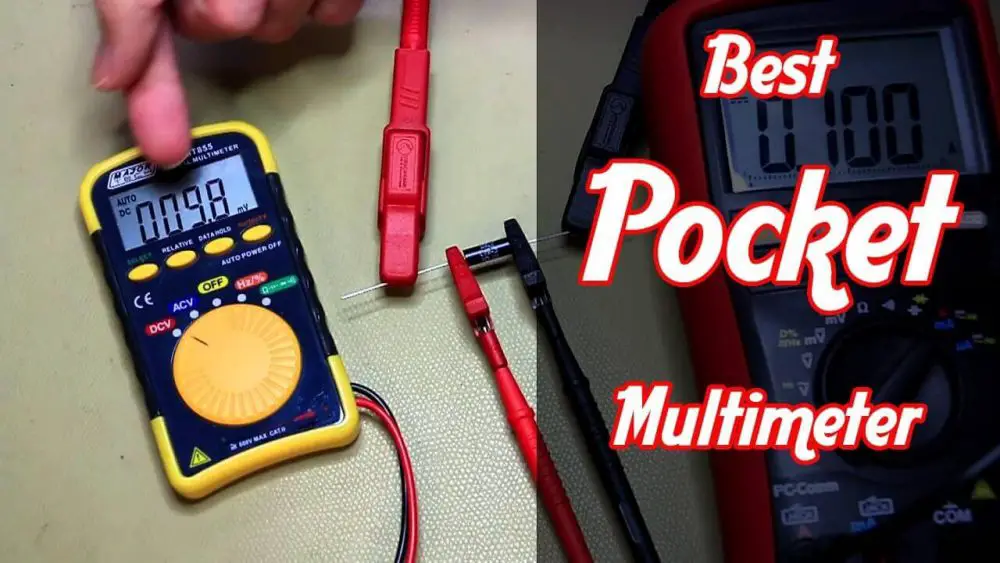How To Test Car Charging System With Multimeter
This article will tell you how to check a car’s charging system with a digital multimeter. For this purpose, we will use a multimeter to match the perfection of the results for a given component.
We will check the state of the battery first, then the temperature of the battery, after that when the battery is in perfect condition we will check the temperature of the alternator and in the end, we check the load of the alternator. This is the complete process to check the car charging system.
The most important tool is a digital multimeter for excellent troubleshooting of the car’s charging system.
Charging system. Digital multimeters are used to detect current, voltage, resistance, frequency, Temperature, pressure and vacuum, duty cycle and diode test. To proceed with these operations, the first issue to tackle is the CANNOT-START engine complaint. After that, we will go step by step to see the whole charging system checked.
Table of Contents
A car’s charging system depends upon four methods:
- Running Temperature of the alternator,
- State of the battery’s charge,
- Load of the alternator,
- The battery temperature.

How to test the Car Charging System with a Fluke 117 multimeter
- To check Car charging system, I use Fluke 117 digital multimeter.
- To start, we will set Fluke 117 multimeter to DCvolts settings up to 20V.
- The battery I am checking is 12.15 V which is normal.
- So place the black lead of the multimeter to the negative terminal of the battery.
- And red lead of the multimeter to the positive terminal of the battery.
- Now start the vehicle.
- Check the multimeter; the reading on the screen goes up; 58 volts.
- Now start the viper, headlights, hazard lights, car heater, car radio and check the multimeter.
- The Fluke 117 multimeter shows a reading of 58 volts.
- That means the charging system is working well; if the multimeter’s reading is below 12 volts, it is alarming to fix the system.
How to test car batteries with a fluke 87 digital multimeter?
- I am using a Fluke 87 digital multimeter to check the car battery.
- It determines the battery health if the battery is cranking.
- Shift the selector dial to voltmeter D/C voltage.
- Place the Red lead into the red inlet and Black lead into the black port of the multimeter. The other ends of both the leads connect to positive and negative terminals of the battery.
- Turn on the Fluke 87 V voltmeter and press the min/max button. It will show the battery strength, suppose 12.8volts.
- Now start the vehicle and turn it off.
- The multimeter reading has changed to 4 volts; this is because the alternator is charging the battery. It means the battery cells are alive.
- If you measure 0 Volt reading, it means the battery is dead, and you need to recharge it.
- If the reading on the voltmeter is below 5 volts, this is the sign to replace the battery.
How to test the alternator of the car charging system with fluke 115-true RMS?
- To check the Car Alternator, You may diagnose it yourself. I am checking it with the Fluke 115 True RMS digital.
- The key to starting your car is seeing your barrier light come on, telling you that your battery is not getting any charge after starting the vehicle.
- The screen light should go off. The more alternator is providing electricity to maintain the barrier and the electrical demand.
- You might be turning on the ignition if the light didn’t go off when you start the car or if the light comes while driving, indicating you have an alternator-related issue.
- Let’s start with the basic alternator voltage test using a multimeter.
- In general, the range between 13.00 volts and 15.00 volts is considered a suitable charging voltage.
- But modern cars have ECU-controlled alternators with a much more comprehensive range for your car’s alternative.
- To check the load on the alternator, you turn on the headlights, AC and as many accessories; by doing this, you will increase the electrical demand on the alternator.
- To check the Higher efficiency at higher rpm’s, even erasing the engine rpm to around 2000 in this cap, the rated alternator voltage range is between 13.2 volts and 14.8volts.
- Let’s the negative and positive leads of the multimeter attached to the negative and positive terminals of the battery.
- The cable goes inside the wiring harness to the fuse box. A negative terminal is alternate housing; here’s the negative wire going out from the battery, which is bolted onto the car’s chassis, so the entire car chassis becomes a giant negative terminal so different components in the vehicle can share the body as a ground connection here. The alternator is bolted or joined on the engine; the alternate housing becomes a ground for the alternator.
- Connect the multimeter directly to the alternator; compare this reading against the previous reading we had on the battery; if you see more than 0.5 volts of a difference in the readings here, find the voltage drop, where the drop is.
- Let’s start connecting the battery to the positive and negative ports, and the reading should be less than 0.2 volts; check between the B port and the cable and between the cable and the V port if those connections are good, then the cable itself is bad. So you have to replace it to test the ground connection.
To check the ground, first, connect the red lead of the multimeter to the more alternate housing and the black lead to the battery’s negative terminal; again, the reading should be less than 0.2 volts; if it is more than 0.2 volts. That means you have a bad ground connection, so you must check all the ground connections until you find the bad one. You also apply some silicon paste and reinstall them; that’s how we do a basic ordinary test using a multimeter.
How to check the alternator off the car?
- To do this, take out the alternator from the car. Modern cars are very sensitive to voltage differences, so you check old fuses. You can get a relay test like this; they are relay state work and very inexpensive in some cars. The ECU controls the power of the ground supply to the alternator.
- In this type of design, you can use a jumper wire to bypass the issue and manual supply power or ground to the alternator. If the alternator is then working, then either the wiring coming from the ECU is bad, or the issue itself is bad; if that is the case with you having three options; bypass the ECU, rebuild the ECU or replace the ECU.
- Before going further, we have to learn how an alternator works when getting current from the battery. This current goes straight into the voltage regulator, depending on the battery voltage. The voltage regulator then adjusts the amount of current it passes on to the brush assembly. So this rotor is now getting current; the rotor has a lot of copper winding, and this rod is getting current and becomes an electromagnet around the rod.
- It consists of three separate copper windings. Each winding end is connected to a couple of diodes; when the rotor is spinning, it induces a current on the stator because the rotor is continuously spinning. So the polarity of the magnetism received by the stator is constantly changing. So the direction of the current being generated on the stator is called the alternative current.
- Because our car needs direct current, it is sent through a couple of diodes; to convert it into the direct current. Because this stator has three separate windings and each one needs two diodes. In which each is required in total. This six-pack of diodes is called the rectifier; the other end is the B post, so this D/C converted current is going to the battery. Now we test each component to check the voltage regulator in the engine at around 2,000 RPM and note down the reading.
- Erase RPM a few times and see the voltage again; you shouldn’t see a rise in the voltage between higher RPM ranges. Get a steady reading of 13.9V at all times.
- If the voltage rises as you read the engine, the voltage regulator is bad; this is the main reason for an overcharging condition in most alternator voltage.
- The regulator is elementary to replace. Modern cars have easy control alternators where the class computer regulates the power supply to the alternator.
How to check battery amps with fluke 88v digital multimeter?
To check car Battery amps, I am using a Fluke 88V digital multimeter. You may use any meter, but the basics are the same. There are two ports in this multimeter, amps and microamps. And a common port.
- First of all, turn off the car engine, close all the doors and keep all the car lights off. Now take out the negative terminal clip of the battery.
- Put the black lead head into the common black port and the red lead head into the amp post. The tail of the red lead into the battery clip, removed from the battery, and the other black tail touches the negative battery terminal. We will use only one (negative)terminal here.
- Now turn the dial to DC volt setting and maximum reading of 20 volts. Next, touch the knobs black to the negative terminal.
- You may observe that the reading on the screen is 0.25 milliamps; the gold standard for the battery reading is 0.50 milliamps; It means the battery needs to be replaced.
How to check any battery, DD AA, AAA and 9v batteries with a digital multimeter?
- To check all the batteries, we need a multimeter. I am using the Fluke Digital multimeter. As mentioned above, the settings of the multimeter are the same for all the meters.
- Turn on the multimeter and place the dial settings to the D/C mode and the red lead head into the red post, positive and black lead head into the negative, black post. Next, place the positive lead of the probe to the battery’s positive terminal and the negative lead to the battery’s negative terminal.
- I took two 9 A batteries; one is dead, and the probe leads to the respective ends. So the reading of the battery is 9 volts. The other 9A battery is brand new, and I checked the reading in the multimeter, which is 9.78.
- But how do we know if a battery is good or bad? It is not the voltage. It is internal resistant, not only by a multimeter.
- We use an aluminium resistance. And connect this to multimeter leads.
- We use an alligator clip to connect it to both ends of the battery to make a circuit. But, first, I check the good battery.
- The reading in the multimeter is 8.97 volts, other than 9 volts. Which is good, and the battery is working.
- Now I check the bad battery, and the reading in the multimeter screen is 2.87volts after the addition of aluminium resistance.
- The previous reading was9 Volts. Now the multimeter screen shows that the reading is too low and the battery is dead.
- Similarly, we check AA, AAA, DC batteries and use a resistance together with the digital multimeter to confirm whether the battery is in working condition or not.
Frequently Asked Questions
The most common reason an alternator fails to charge a car battery is that one of them is going bad. You may quickly test the voltage by connecting a multimeter to your battery while the engine is off. The voltage reading should be measured between 12 and 13 volts.
Signs of a failing alternator:
Trouble Starting or Frequent Stalling
The smell of Burning Rubber or Wires
Dim or Overly Bright Lights
Slow or Malfunctioning Accessories
If the battery is dead
Growling or Whining Noises
The battery warning light on the dashboard
Conclusion:
In this article, I describe how to check a car charging system with a digital multimeter. It includes a car battery and alternator within the car. We also checked the alternator system off the car. And illustrate it together with a diagram to show the alternating current supply procedure to the car charging system to understand its function and the system failure. Furthermore, in this article, we have learnt how to check the dead batteries and alive batteries with a digital multimeter by using a resistant aluminium clip and attached it to the digital multimeter with the help of an alligator to check amps of the AA, AAA, 9A and D, C batteries.
Related Posts:
How To Test Capacitor With The Multimeter In Circuit




